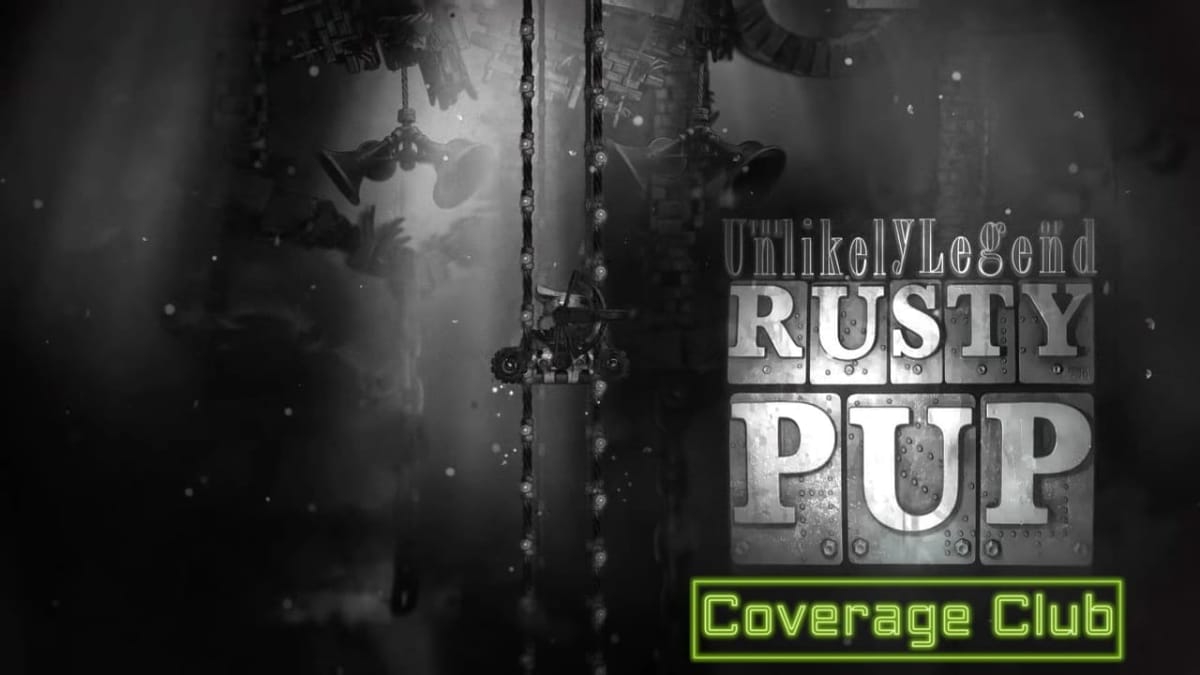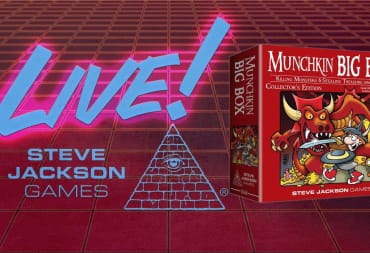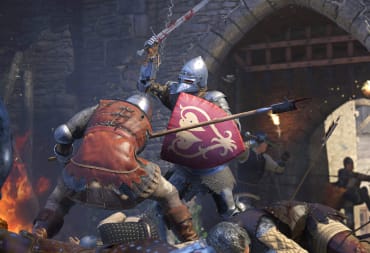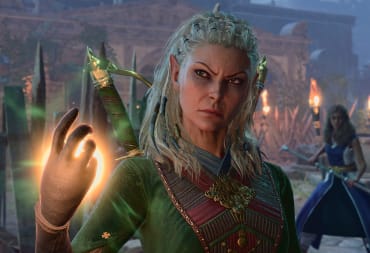As soon as I started up The Unlikely Legend of Rusty Pup, my first thoughts were “Hey, it’s Conker!” One of the designers, Chris Seavor, is a Rare alum who led the development of Conker’s Bad Fur Day and voiced Conker himself. As someone who loved BFD, it was pleasing to hear the familiar voice narrating Rusty Pup. The bizarre darkness of that Rare classic lingers throughout Pup, as well. I feel sorry for poor little Rusty like I did Conker: he’s a cute little guy in a strange and scary world, making his meager way towards a mostly unknown goal. The menu also flashes back to past Rare titles, with three save files and options hidden under title letters that you can move.
Despite these obvious holdovers, Rusty Pup is very much its own game, one that grew on me over time. Despite Seavor's voiceover and the Conkeresque atmosphere, the gameplay or the visuals didn't grab me at the start. With low first impressions, I was gradually pulled into the confusing visuals and gameplay and slowly began caring for the story.
My earliest impression was overwhelmed by a mess of visuals. Rusty Pup's backdrop is overcrowded - a busy collage of industrial imagery and objects. Platforms, pipes, gears, and metal fencing are some of a myriad of items that clutter each scene. This makes for a dark and gloomy landscape, but it’s too busy, and thus there’s no straightforward aesthetic. Industry and factory are two prominent themes, but you don’t get one, neat mood. This could be intentional, but it was confusing for me. What kind of location am I in - a factory, a junkyard, a back alley? What time period is this: the industrial age, maybe modern times? At any given point I was given a large amount of visual information and no clear answer.
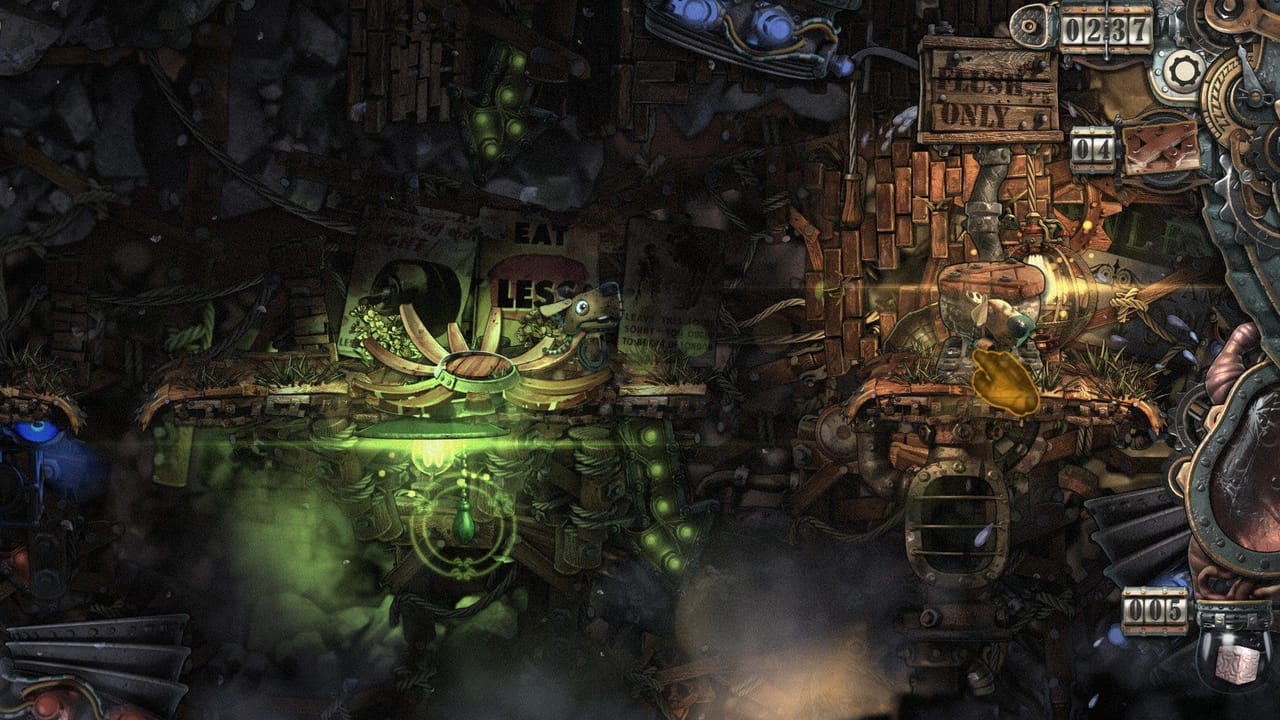
You guide the titular mechanical canine indirectly. You do not ever control his movement with any keys, thumbsticks, or buttons. All you have is a hand-shaped cursor. Rusty Pup likes to stay in the light and will travel toward it. You turn lights on to lead Rusty where you want. You also place building material, like stone or wood, to cover up gaps or to break the pup’s falls. Rusty is always moving, so the pace can become hectic. You need to scroll the camera view and zoom out to keep a look ahead to where Rusty is going and be sure a path is ready.
Each level consists of sequences that you have to get just right. Because you do not have direct control over Rusty, you may mistakenly sit back and watch too much. The ideal player will be constantly looking ahead and planning out what needs to happen to keep Rusty on the right track.
Your "collectible” goal is finding and eating cube-shaped brains. You then find a toilet to flush them down and head for the Way Out. (Yes, you read all that right.) Miss one gap or fall on Rusty’s path and you have to retry. Orchestrate all this correctly and you’ll feel like a maestro. It’s challenging and initially off-putting, but there’s a cadence to the hands-off gameplay that enveloped me when I gave it a chance.
In its early stages, Rusty Pup is rather difficult, and I had trouble within about thirty minutes. The gameplay is tricky on its own because trial-and-error is a must. I don’t think you could figure out any challenge on your first try. Several times I’d get pretty far from a checkpoint, then suddenly see Rusty’s frame slam into the ground and become a burning heap. That's one way to discover that I fell too far downward. Still, had I looked ahead, I would never have guessed that the given drop was too high. You will discover several paths to progression the hard way. A few hours in, I still could not tell when Rusty may fall to his death or not, jump up or not jump up, and so on. It can be quite the guessing game.
The game can also be picky. It’s difficult to know when a certain item will work or not. Once I placed a piece of wood over a gap one grid too low. When Rusty reached the end of the wooden bridge I had made, instead of jumping up onto the next landing, he jumped forward to no avail. It took me a while to finally figure out that I needed to place the wood piece one step above it.
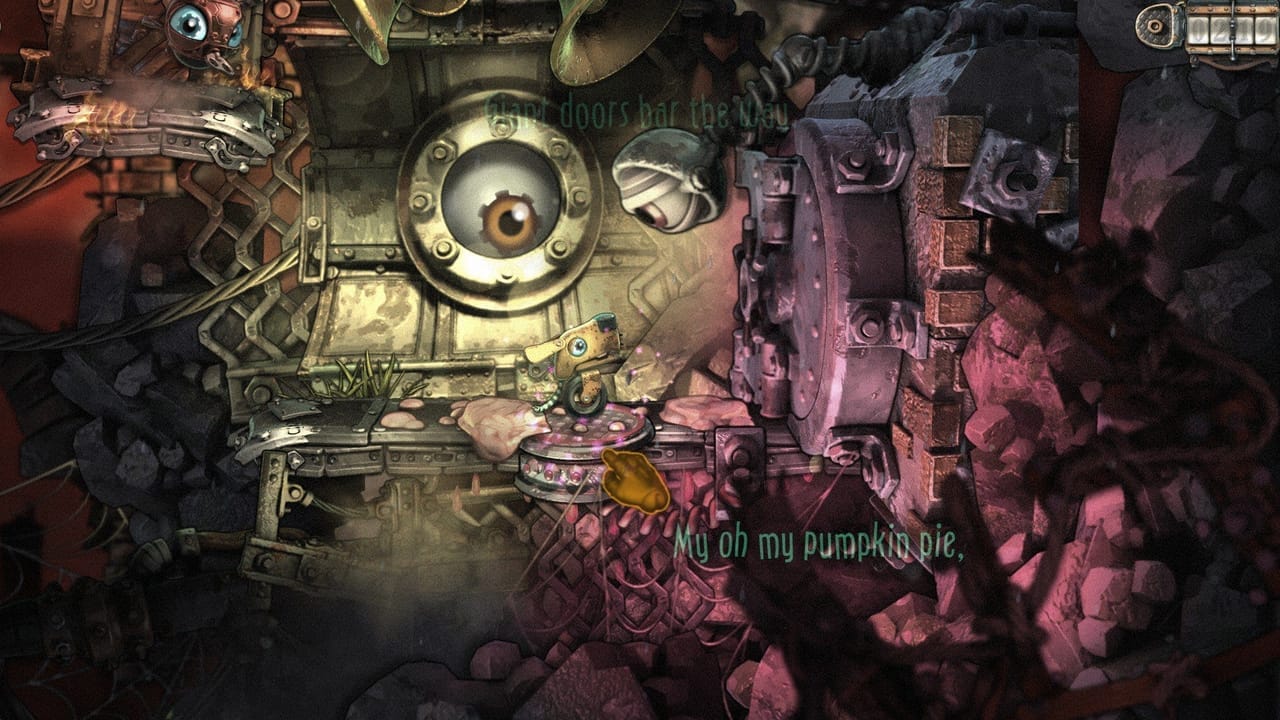
The story, like the visuals and gameplay, starts off confusing but can grow on you. Each level has a quotation that appears at the beginning, like “Enough was enough, Sam conceded. It was time to leave this hole” followed by numerals like "I-XVIII" that suggest these are poem excerpts or something similar. I have not learned what they mean yet, but they must bear some relation to each level.
You also can’t help but wonder what’s up with it all. A mechanical dog-unicycle contraption eating cube-shaped brains and flushing them down toilets – I mean, really, what’s it all about? Is Rusty’s world a ruin? An abandoned factory? There are also two distinct narrators, one upbeat and the other full of ridicule, who only speak in rhymes (another Rare nod). They reference a “her”: “Don’t be her fool” or “Don’t listen to here,” they'll say. Who are they talking about? There’s so much weirdness and so many clues that it all means something, and I want to discover what. There's likely a crazy story cooking here.
Curious as I am about the story, the game eventually won me over. Still, the loud backdrop and trial-and-error gameplay make Pup a tough nut to crack. Even if you're an old Conker fan, that may not be enough on its own to carry you through Pup. It’s a game you have to allow to grow on you since its look and feel are so indiscernible at first. With some playtime, there's an intriguing world here, and I feel sorry for the little guy at the center of it.
TechRaptor covered The Unlikely Legend of Rusty Pup on Steam with a code provided by the developer.
Have a tip, or want to point out something we missed? Leave a Comment or e-mail us at tips@techraptor.net
